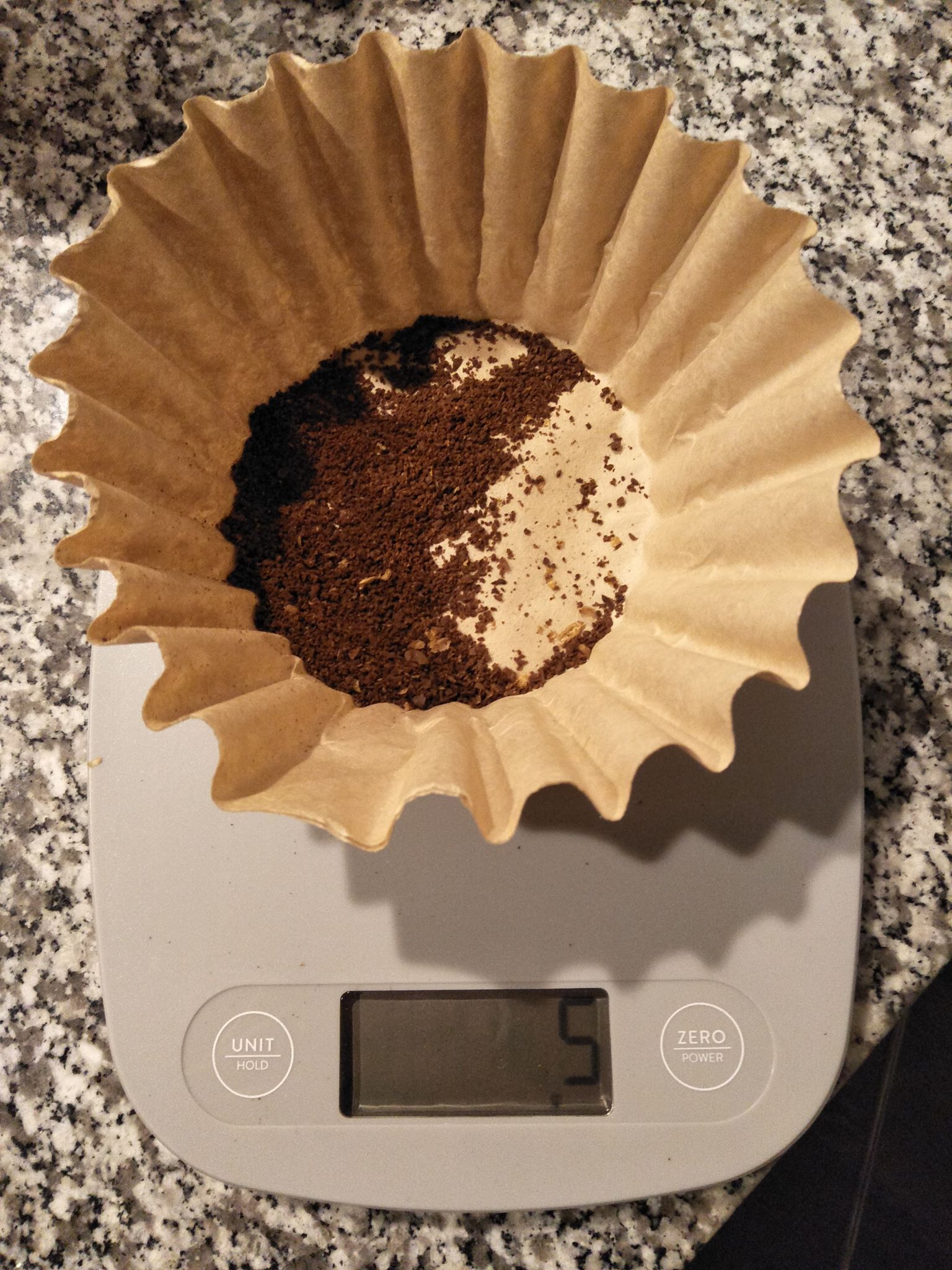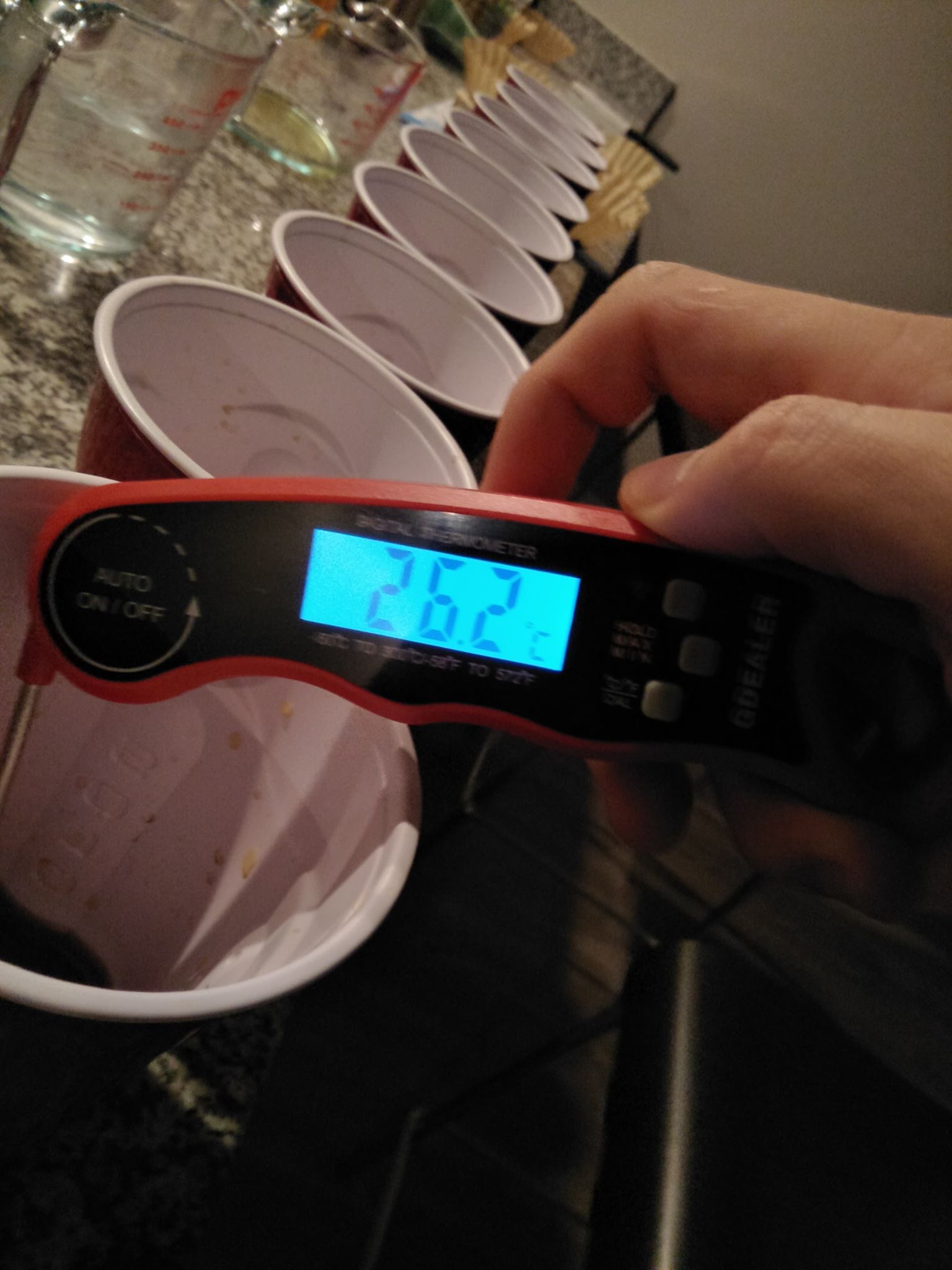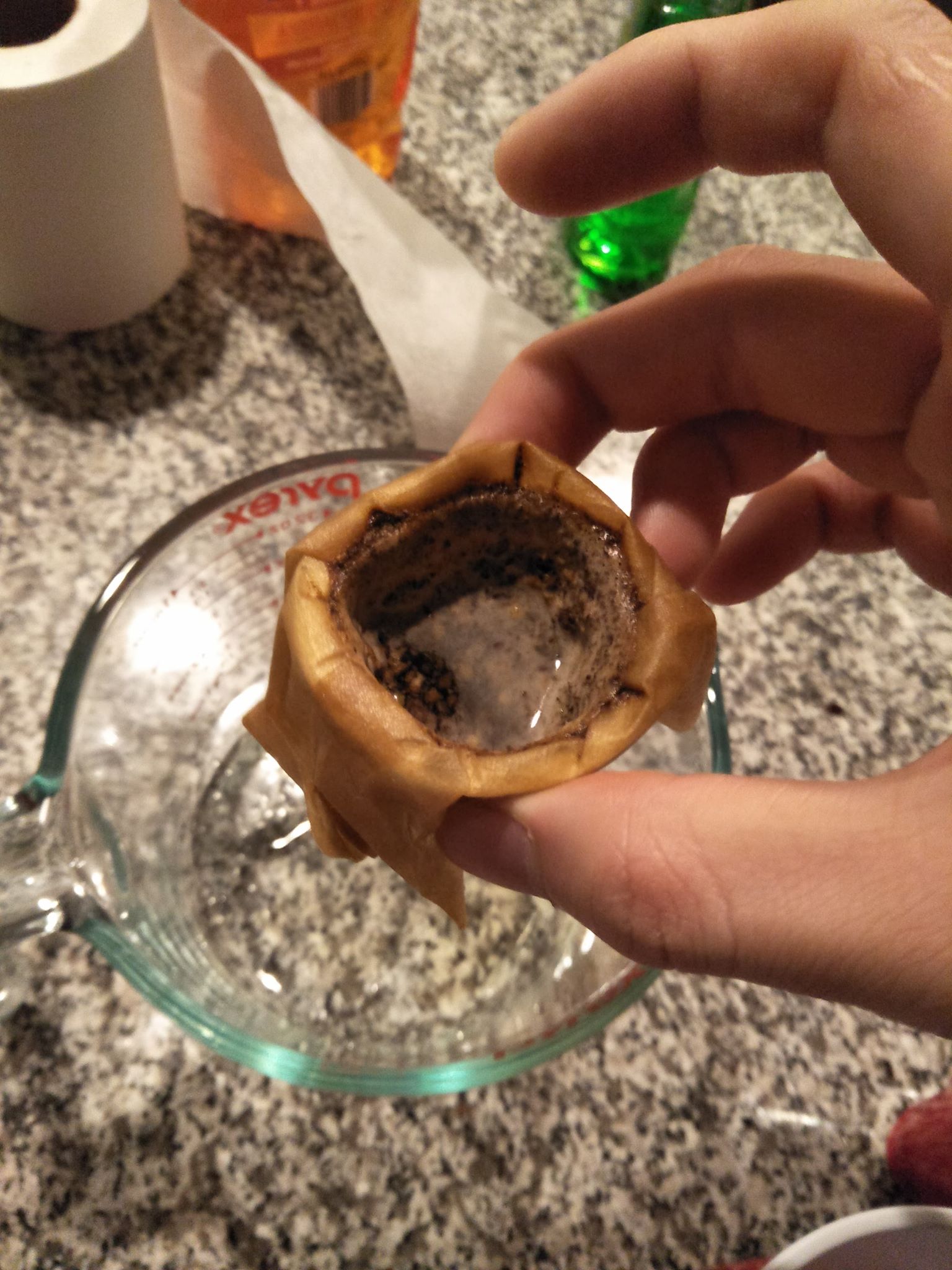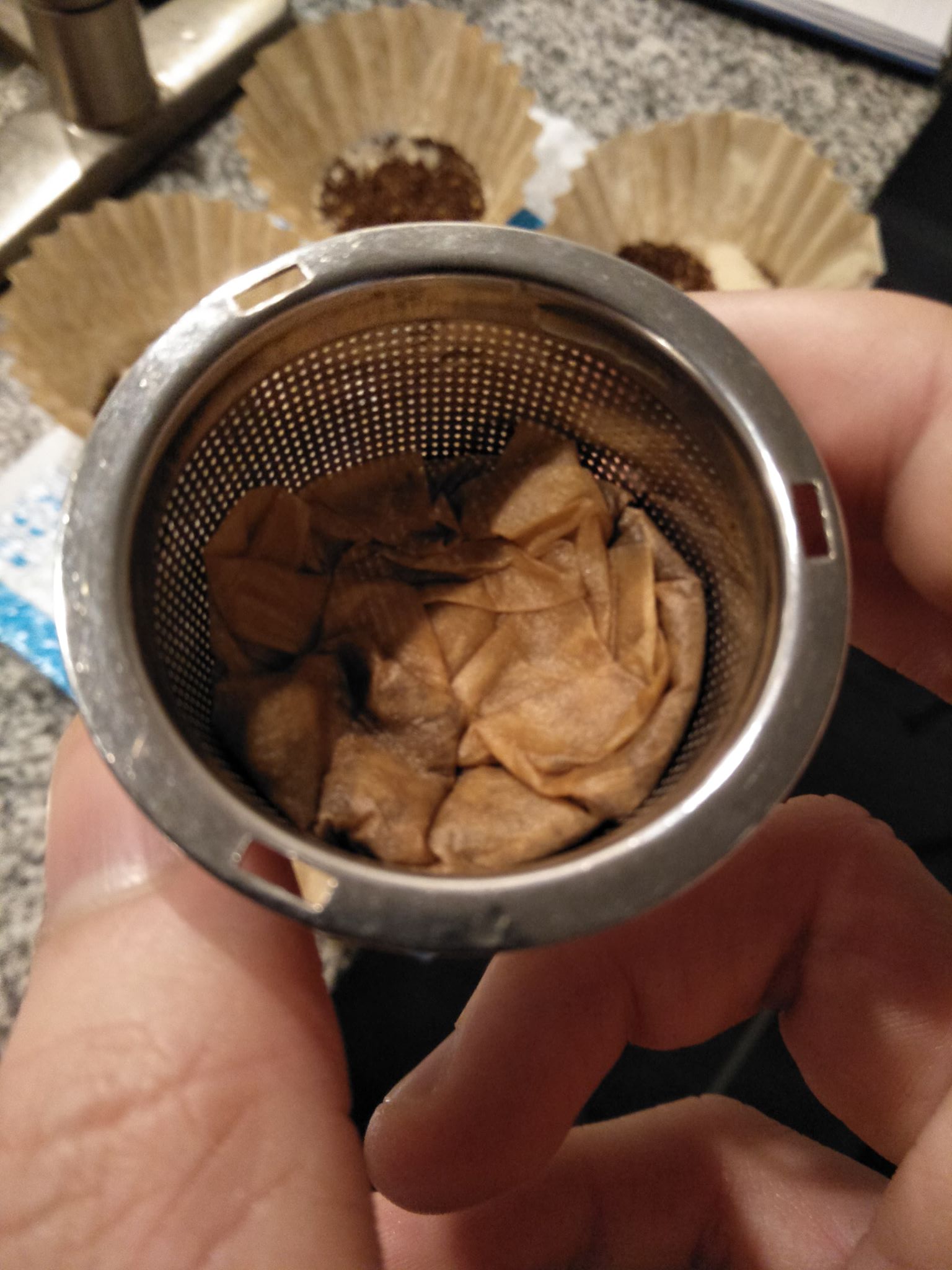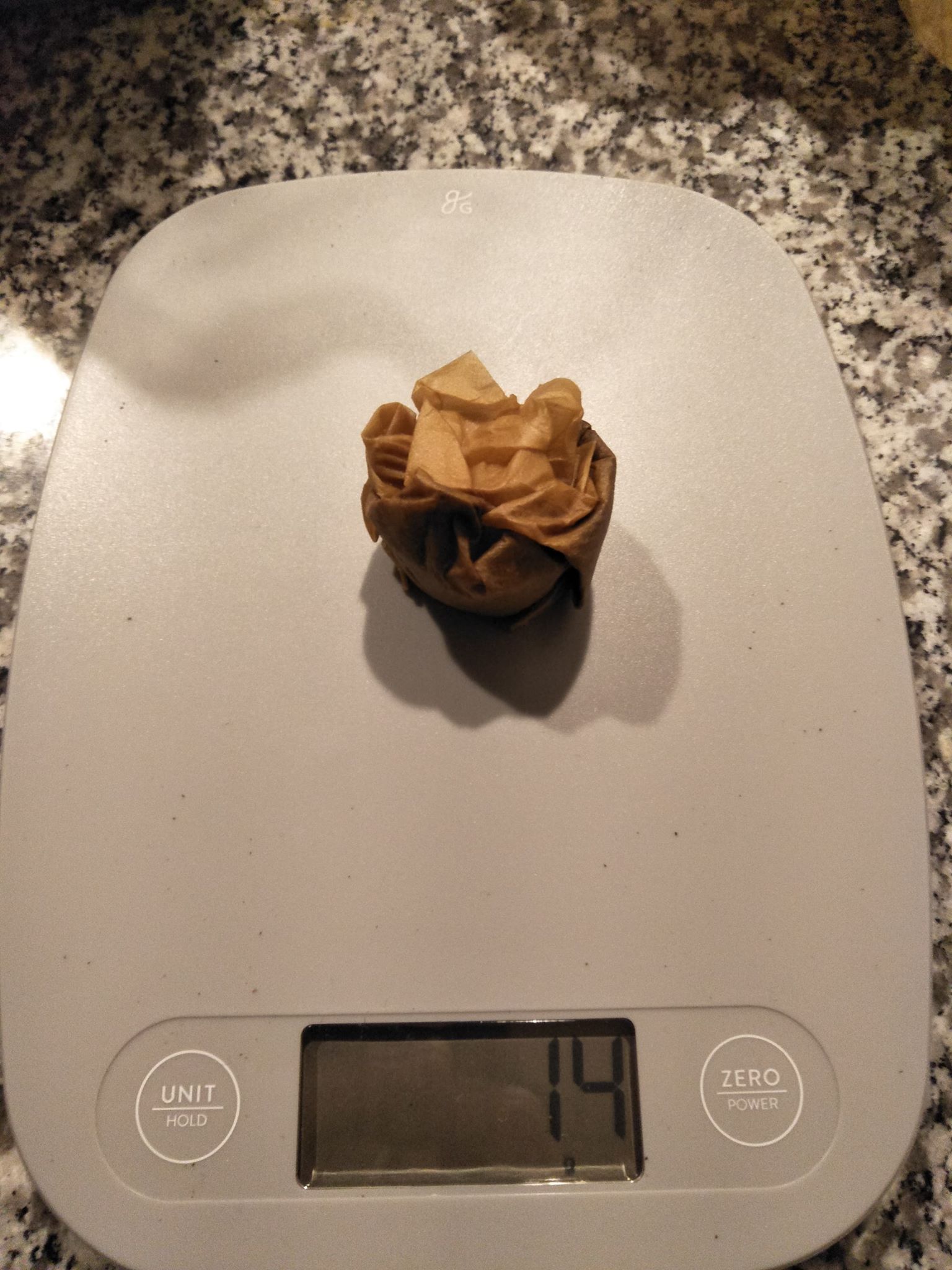This week, we conducted an experiment to determine what particle size of coffee results in the most efficient extraction.
To vary the particle size of coffee, we adjusted the grind size on our manual coffee grinders as follows: For the Hario Coffee Mill Ceramic Slim, we screwed the grind adjustment nut at the base of the grinder all the way clockwise (See Figure 1). We varied particle sizes by turning the adjustment nut 1, 3, and 5 times counterclockwise. Other coffee grinders have a similar mechanism for adjusting grind size.
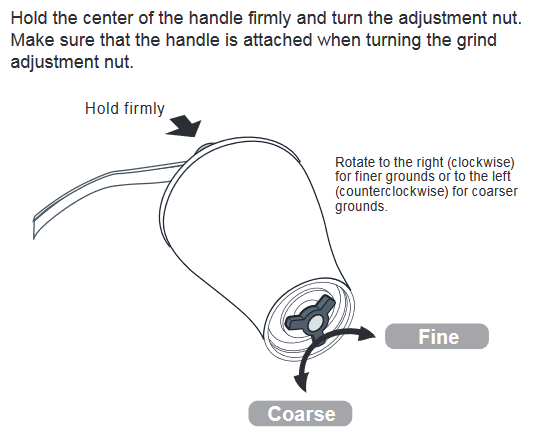
We set up our pour over coffee experiments similar to those of the temperature experiment. We massed 5g of coffee for each trial and kept the water temperature constant at roughly 40°C.
We set up empty measuring cups of 1/4 cup, 1/3 cup, 1/2 cup, and 1 cup. We will measure the amount of time it takes for the coffee to fill each of these cups. After the coffee has filled each measuring cup, we will also measure the final conductivity of the coffee.
Actual experiment
This is the initial batch of ground coffee at each particle size:

Fine 
Medium 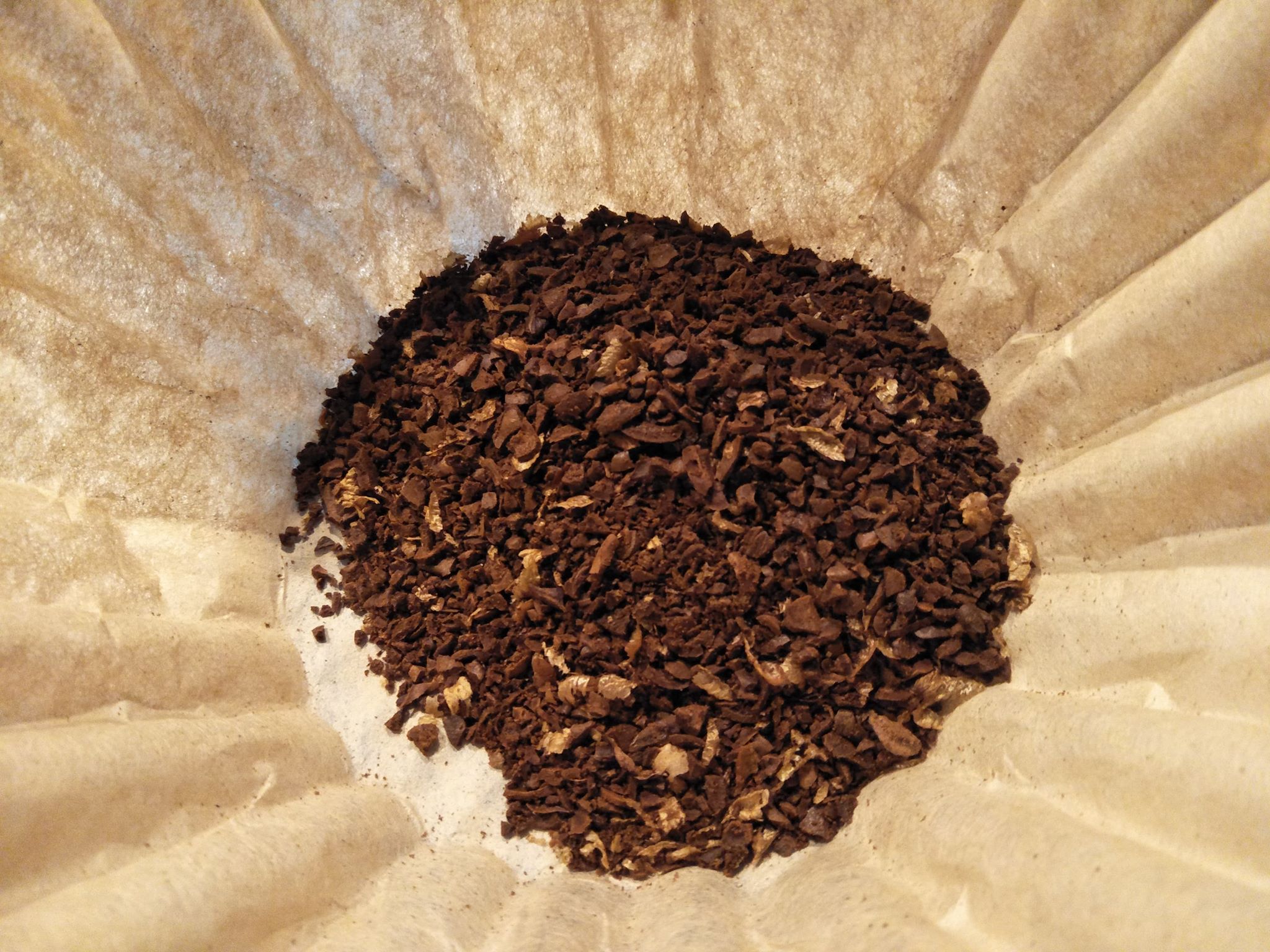
Coarse
Each batch weighted around 16 grams, meaning we could have failed 2 times before having to regrind (lucky that wasn’t the case). Then, we took out 5 grams of each batch, and put it in a filter:
Then we made sure the water coming in is around 40$$$^{\circ}$$$
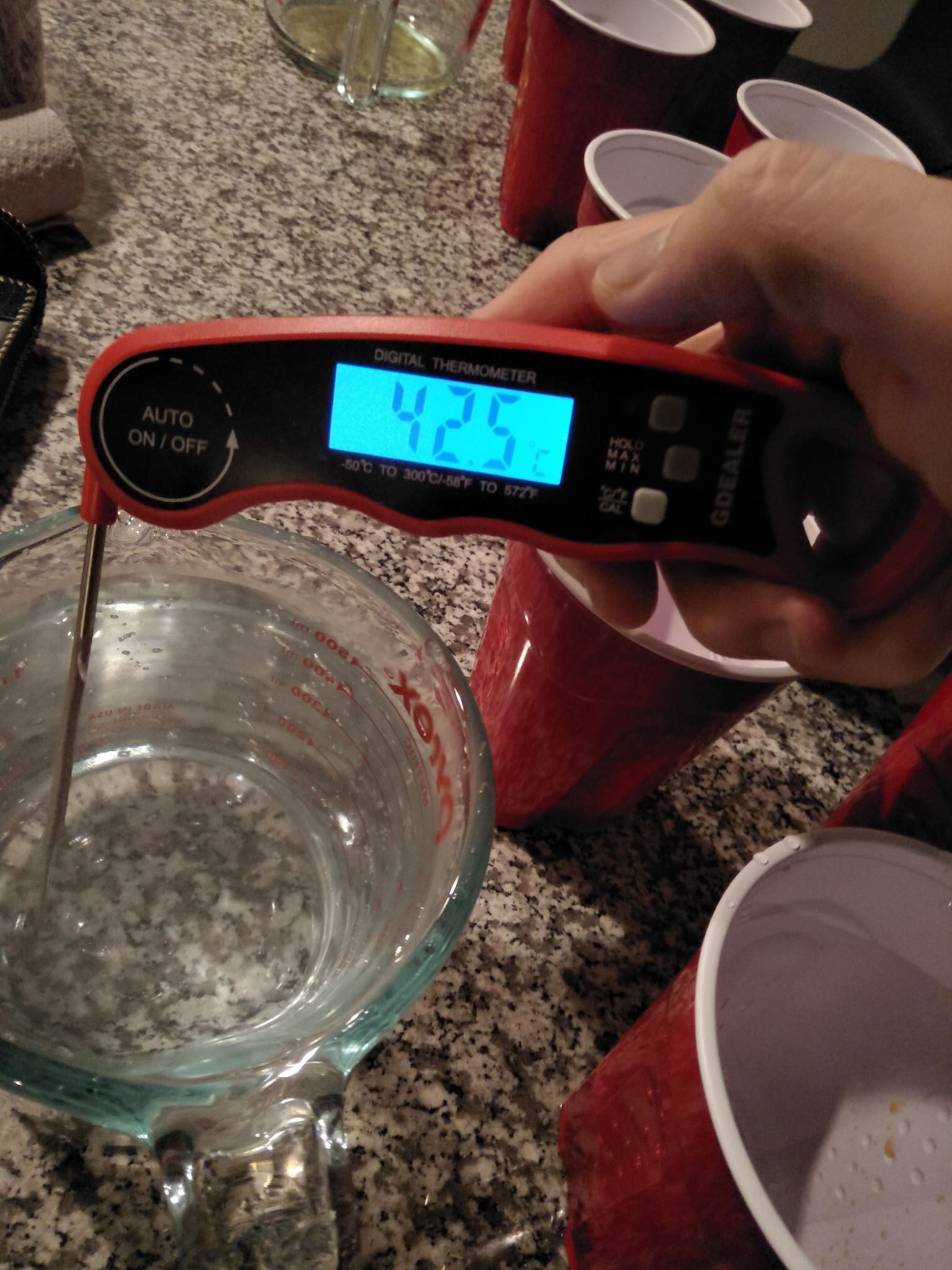
Then we poured the hot water over the filter, moving to a different cup every 30 seconds.
Then we waited for everything to cool down, then we measured the conductivity and the volume of each cup. We measured the trashed coffee’s mass too, just for fun:
We repeated this procedure again for the 2 other particle sizes.
Results
We saw how volume changes over time in the following graphs:

As we saw, larger grains don’t pack together quite as much as smaller grains, therefore water easily gets through. How about concentration and conductivity?

Concentration over time appears to be decaying exponentially. We graphed this data again on a logarithmic scale, just to make sure:

Yes, concentration was roughly decaying exponentially. We got the feeling that fine-grain coffee should be the most effective at extracting the coffee substance, but we couldn’t be sure because the total volume in each of the 3 trials was different. So we had to scale all 3 particle size’s data to have the same volume:

We can now conclude that a fine-grain coffee size is the best at extracting coffee.
